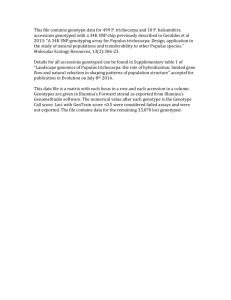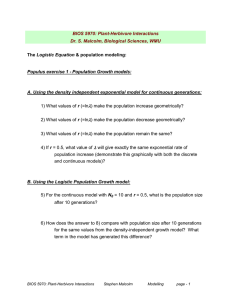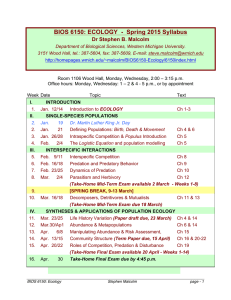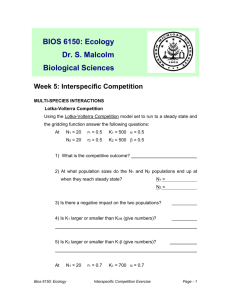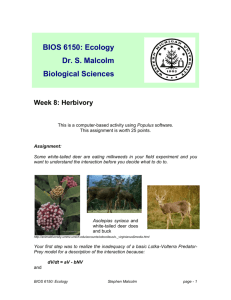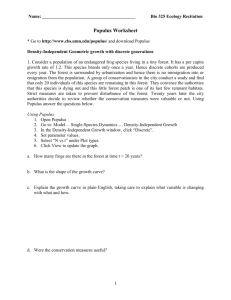Intraspecific competition
advertisement
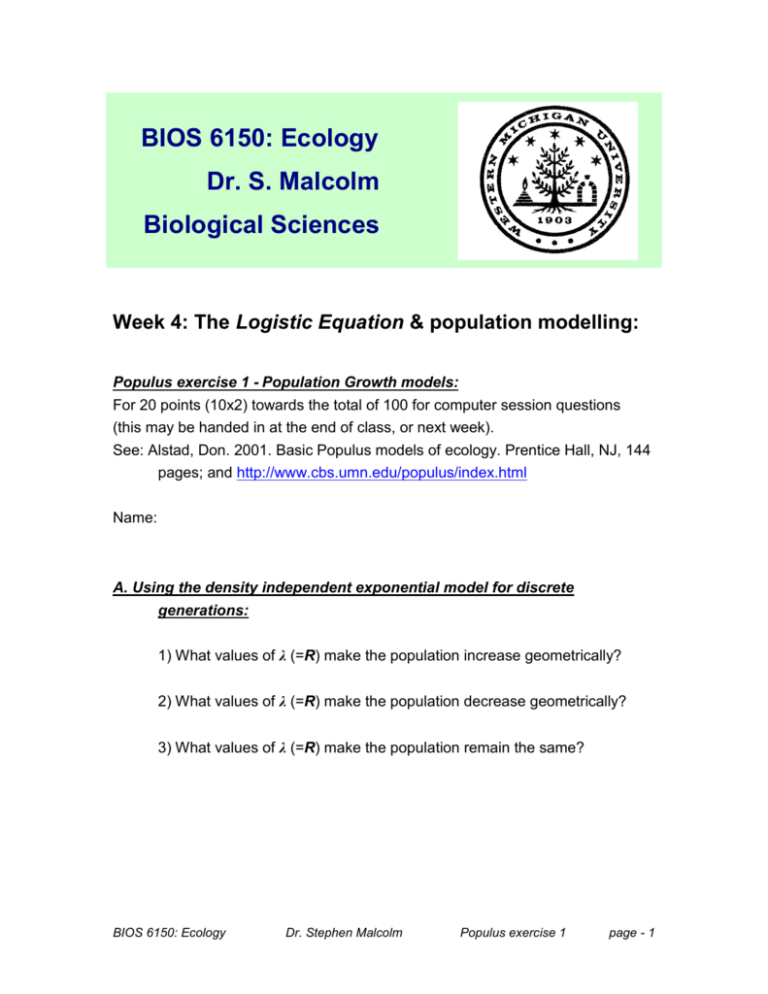
BIOS 6150: Ecology Dr. S. Malcolm Biological Sciences Week 4: The Logistic Equation & population modelling: Populus exercise 1 - Population Growth models: For 20 points (10x2) towards the total of 100 for computer session questions (this may be handed in at the end of class, or next week). See: Alstad, Don. 2001. Basic Populus models of ecology. Prentice Hall, NJ, 144 pages; and http://www.cbs.umn.edu/populus/index.html Name: A. Using the density independent exponential model for discrete generations: 1) What values of λ (=R) make the population increase geometrically? 2) What values of λ (=R) make the population decrease geometrically? 3) What values of λ (=R) make the population remain the same? BIOS 6150: Ecology Dr. Stephen Malcolm Populus exercise 1 page - 1 B. Using the density independent exponential model for continuous generations: 4) What values of r (=ln λ) make the population increase geometrically? 5) What values of r (=ln λ) make the population decrease geometrically? 6) What values of r (=ln λ) make the population remain the same? 7) If r = 0.5, what value of λ will give exactly the same exponential rate of population increase (demonstrate this graphically with both the discrete and continuous models)? C. Using the Logistic Population Growth model: 8) For the continuous model with N0 = 10 and r = 0.5, what is the population size after 10 generations? 9) How does the answer to 8) compare with population size after 10 generations for the same values from the density-independent growth model? What term in the model has generated this difference? 10) Using time lags in the logistic population growth can you generate population fluctuations? If so, at what reproductive values (r or λ) do you see monotonic damping, and at what values do you see damped oscillations? BIOS 6150: Ecology Dr. Stephen Malcolm Populus exercise 1 page - 2
